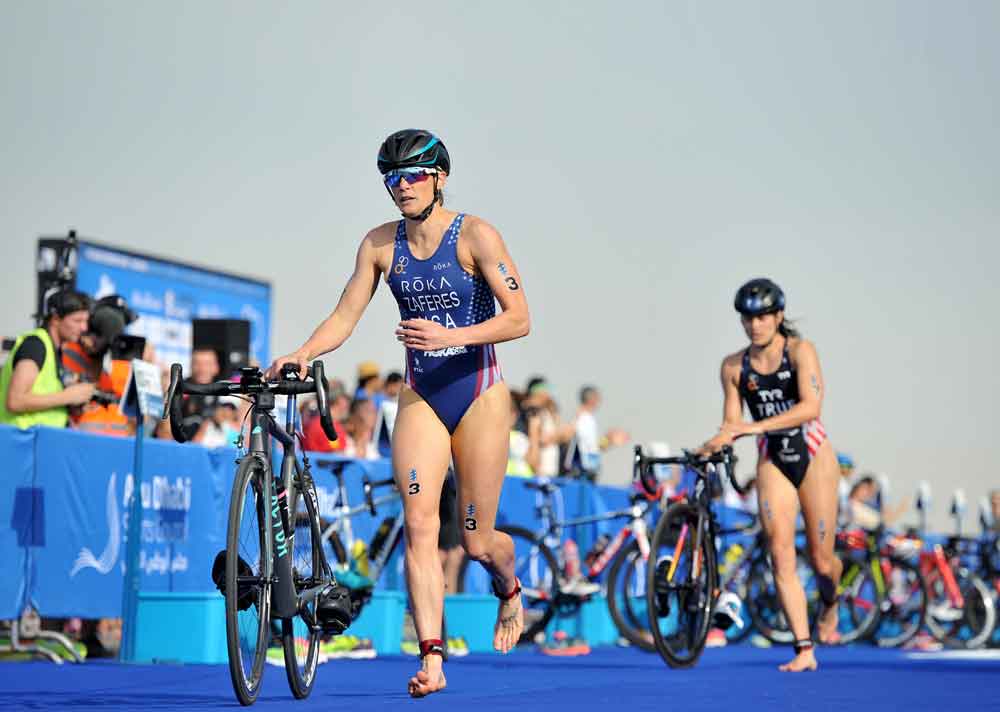The Role Muscle Memory Plays in Fast Transitions

Photo: Janos Schmidt/Triathlon.org
You just nailed your swim split, but how did all of those athletes get out on the road before you? Fast transitions don’t need to be a mystery if you harness the power of muscle memory. Being able to get through a transition or your daily drive to work without thinking about it—what scientists call “motor learning”—is a combo effort between your brain and the motor units in your muscles. Repetition causes new pathways to form between them—like creating new trails in the wilderness.
“When you’re hiking, there are the main, marked trails, and sometimes there are little paths off the official trails,” says Craig Wrisberg, Ph.D., co-author of Motor Learning and Performance and professor emeritus of sport psychology and motor behavior at the University of Tennessee, Knoxville. “The more you go down the small paths, the more worn they become, and the smoother and easier they are to travel down.” So to make transitions automatic, you’ve got to create those paths and then wear them in. Yes, practice is key. But there’s more to it than that. Your plan:
Do a detailed run-through. Note the word “detailed.” Don’t just tell yourself you’ll put your run shoes on. Decide where you’re going to grip them and how you’ll get your feet in. It may sound like you’re overthinking it, but on race day, you don’t ever want to be wondering, “What do I want to do here?” Wrisberg says.
Then practice it. “If you do 10 repetitions of each transition frequently—say, every other day, or make it your recovery-day training session—it’s going to contribute to your performance in a big way,” Wrisberg says.
Do mental reps. Mentally rehearsing your transition is as important as doing physical reps. “Brain research shows that when you imagine yourself doing something,” Wrisberg says, “your brain sends signals to your muscles in the same way it would as if you were doing movements physically.”
The more specific the training is to the race venue, the more effective it is. So if you’re going to be on grass, imagine running through it when it’s dry and when it’s a muddy mess. “Context characteristics are important for remembering, repeating and automating.”
Can transitions ever become as automatic as brushing your teeth? Well, no—unless you practice them as often as you brush. But if you sharpen your muscle-memory skills, you’ve carved yourself an edge—and maybe even a podium spot—in less time than it takes to scroll through Facebook.
Try these hacks from Hailey Manning, coach at Rising Tide Triathlon and one of the fastest American non-pros in transition at Kona last year:
- Be a minimalist.
“I keep very little stuff in transition. If you give yourself options, you’re going to think, ‘Maybe I’m going to want X.’” - Bundle! “I bundle together my watch, my visor and my race belt. I grab everything and run out of there with it—you don’t want to have to put all that on while you’re just standing there.”
- Do it again. Then do it some more. “I used to set up a transition area in my driveway, ride down the block and repeat the bike-to-run transition over and over again. And when I’m diligent, I practice mounts and dismounts every time I’m on the bike.”